
Basic Tools When working with Electricity
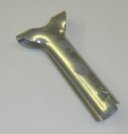

Cable Ripper
This is one of the cheaper tools that can be bought, it is a cable ripper, sometimes referred to as a `Romex® cable ripper. [Romex® is a registered trademark of Southwire Company] It is used is to remove the outer sheathing of electrical cables. At the end of this is a small sharp metal spike. This is safer than using a knife and will not damage the insulated wires inside the cable sheathing.
Insert the tool over the end of the cable, press tightly together then pull away from the cable and it will safely rip the sheathing which you can then peal away and cut.

Wire Stripper
These usually are suitable for different gage wiring, once the outer sheathing has been ripped off, use the wire stripper and place the wire over the tooth notch that matches the gage of the wire being used, then squeeze the handles together, rotate the tool to cut into the insulation of the wire then pull the tool outward away from the wire to remove the wire insulation. Unlike with knifes this will ensure that you have a perfect cut and will not cut into the wire or cut yourself, certainly the safer way to go.
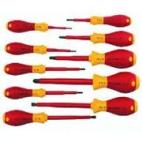
Screwdrivers
A good set of screwdrivers with insulated handles, and ones with insulated shelves are safer.
Screwdrivers come in 3 main types, Philips (star shaped tip), Roberson (square shape tip), and straight edge. There is also a wide variety of tip sizes as well as stem and handle grip sizes.
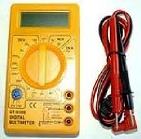
Multi-meter
A multi meter is a multi function meter reading device. The one shown to the left is a digital meter, but analog meters can be bought and usually cheaper however the digital ones will be able to provide a more precise reading. Be sure to select the range and item (like AC or DC, résistance and so on) you can damage the meter if the incorrect setting is used. Some very basic and cheapest of meters will be limited and may only be able to read voltage.
Multi meters can measure voltage, continuity, resistance, and current, some can even check out transistors. For current (amps) most of these consumer type meters can only read in the small range (so most are useless for reading circuit current), use a clamp on current meter for reading current.
They come with wired contact probes.
For greater safety – the electrical safety authority is now recommending using only multi meters with fused leads
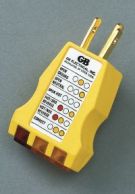
Outlet tester
These are extremely useful, it checks if the sequence of wiring at the outlet is correct

Needle Nose Pinchers
Certainly add this to the list of must have tools, make certain the handles are well insulated. Numerous uses for this tool – a great tool for reaching and moving wires in hard to reach locations.

Wire Cutters
There is a variety of types of these cutters but you need one that has insulated handles (although when cutting an electrical cable it should not be live but get one with the insulated handles anyway) and can cut completely through the toughest electrical cable that you may be working with.

Hammer
Variety of types and sizes available. Would be needed to nail in electrical boxes, and cable staples.
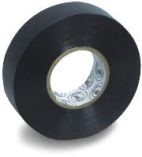
Electrical Tape
A must have in your electrical tool box, among other uses you will need this to signify in switch circuits in instances when a white wire has been re-designated to use as a switched ungrounded conductor (hot).
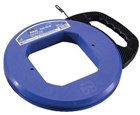
Fish Wire
Fish tape is used to pull / fish through wires in hard to reach places such as through the inside of a finished wall.
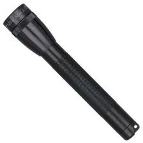
A small bright battery powered flashlight
A must or seeing in dark hard to see areas like inside an electrical box.
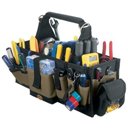
A storage / carrying bag
Well no set of tools is complete without a way to organize it all.
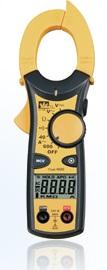
AMP (current) meter
Another nice addition if you have a need to be able to read current draw on a circuit is a clamp on amp (current) meter.

AC Line Separator
Used in conjunction with a clamp on meter to be able to separate the ungrounded conductor (hot) from the grounded conductor (neutral).

Electrician’s Gloves
Electrician’s gloves, insulated for working near live electricity
This is a basic list of tools for general home wiring purposes, but there may be other tools that you could find useful, a variety of different types / sizes of pliers, small and large vice grips. may also be useful.
WHILE EXTREME CARE HAS BEEN IMPLEMENTED IN THE PREPARATION OF THIS SELF-HELP DOCUMENT, THE AUTHOR AND/OR PROVIDERS OF THIS DOCUMENT ASSUMES NO RESPONSIBILITY FOR ERRORS OR OMISSIONS, NOR IS ANY LIABILITY ASSUMED FROM THE USE OF THE INFORMATION, CONTAINED IN THIS DOCUMENT, BY THE AUTHOR and / OR PROVIDER.
By: Donald Kerr